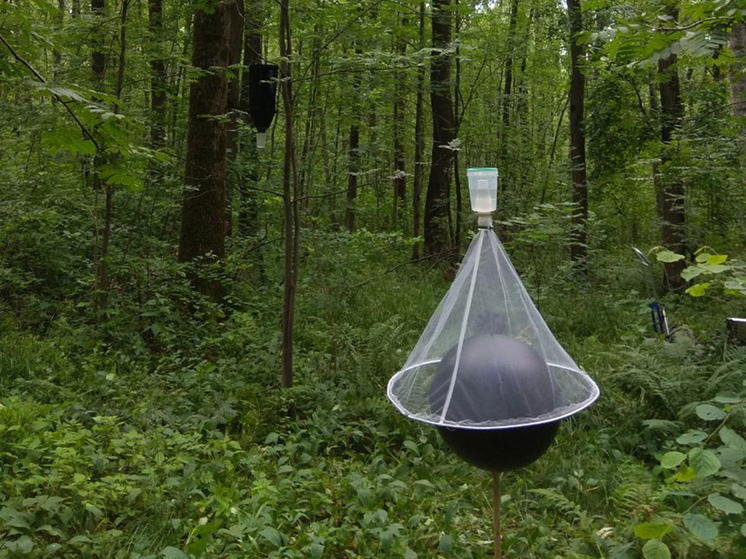
Anton Goncharov, senior researcher at the laboratory of soil zoology and general entomology at the IEE RAS, told MK journalists about the study.
The study is being conducted by the A.N. Severtsov Institute of Ecology and Evolution of the Russian Academy of Sciences on behalf of the Moscow Department of Nature Management and Environmental Protection. The last time the insects of Losiny Ostrov were counted was in the 1980s.
As Anton Goncharov, a senior researcher at the Institute's Laboratory of Soil Zoology and General Entomology, told MK, five types of traps have been installed in the reserve. The first is a pheromone trap for xylophages (insects that feed on dead wood). These are, first of all, bark beetles, a real scourge of our forests. These are also longhorn beetles and some types of wasps. The beetles flock to the trap, which is made up of two 50x25 cm plastic sheets, hit them and fall into the fixing liquid. In the case of a pheromone trap, this is a strong salt solution: if you use, for example, alcohol, it will reduce the quality of the trap, since the smell will interrupt the smell of the pheromone. The number of beetles can be used to roughly determine the number of dead trees in the area.
The next type of trap is the Manitoba. It is designed to catch blood-sucking animals. It is a black ball which heats up from sunlight covered with a cone-shaped net. In its upper part there is a glass with alcohol. Blood-suckers flock to the warm ball, since their main target is warm-blooded animals. Realizing that they have made a mistake and have nothing to eat, they fly up vertically, and, hitting the net, fall into the alcohol. Preliminary results of the surveys showed that horseflies fly more often in open areas of the reserve, and mosquitoes in forest areas.
The Malaise trap is designed to count flies that pollinate plants. It is a large tent-like structure. Flying into it, the insects rise up to the white dome of the tent, and eventually also end up in a glass of alcohol connected to this dome. The entomologist explained that the flies known to most city dwellers are only a tiny part of the species of these animals, while the majority live in nature and feed on nectar. Their species diversity can be used to roughly determine the diversity of flowering plants.
Robinson's trap attracts moths. It is a nineteen-liter bottle with a light bulb and a battery. Scientists determine the number of trees and shrubs by the number and species composition of the caught ones. And finally, Barber's trap, designed to catch predatory insects (in particular, ground beetles and rove beetles), as well as other predators, spiders. These are half-liter plastic cups filled with fixing liquid. A large variety of arthropod predators indicates the stability of the ecosystem, since they require abundant and diverse food sources.
